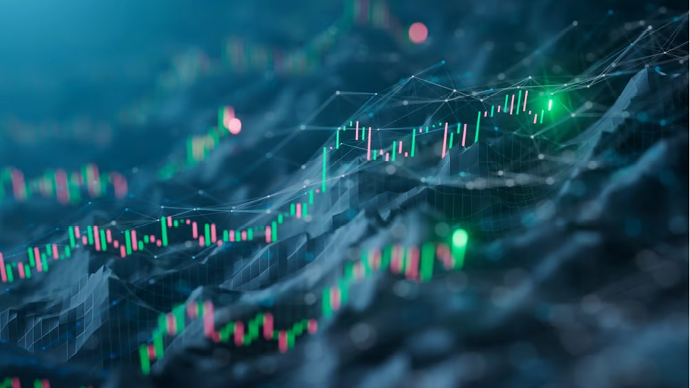Amundi's Reine Bitar on active currency strategies driving performance amidst shifting economic narratives
Investors in the US are beginning to realize that the Federal Reserve may not cut interest rates as aggressively planned in 2024. This is a significant shift from earlier this year when there were expectations of up to seven rate cuts due to ongoing disinflation.
The latest update on the U.S. economy has shaken stock and bond markets with two concerning pieces of information: slower growth and sticky inflation. Inflation, measured by the Fed’s preferred indicator, likely remained higher than anticipated in March. This gives investors another reason to dismiss the idea that the Federal Reserve will employ several rate cuts.
Normally, sluggish economic growth would bolster expectations for rate cuts, but ongoing price pressures have muddied this outlook.
The NEI Global Total Return Bond Fund strategy is provided by NEI Investments, sub-advised by Amundi Asset Management and has a 10-year track record. Amundi's global fixed income team employs a macro-focused investment approach that aims to maximize returns potential through duration, credit risk and currencies.
In an environment characterized by elevated interest rates and increased capital costs, the global economy has shown remarkable resilience. In conversation with Wealth Professional, lead manager of the fund Reine Bitar notes, “We have seen the dominant narrative quickly shifting from a U.S. soft-landing towards a 'higher for longer' narrative with only one to two cuts priced for this year.” This shift has resulted in higher bond yields, creating a challenging yet opportunity-rich environment for fixed income investors.
The seasoned portfolio manager explains, “Our top-down strategy begins with a comprehensive analysis of global growth, inflation, and monetary policy. This framework helps us establish strong strategic convictions regarding duration, currencies, and credit, as well as determine the overall risk level for the portfolio.”
Active currency market participation
The NEI Global Total Return Bond Fund has been very active in capitalizing on opportunities in the currency markets. “Not all central banks are on the same path, and exploiting differences in interest rates is set to become one of the most popular investment strategies this summer,” says Bitar.
As markets bet on shallower rate cuts keeping volatility subdued, strategists across Wall Street are touting carry trades1, which thrive in calm markets by harvesting the extra income from higher-yielding currencies and bonds.
A Bloomberg index tracking carry trades in G10 currencies has returned nearly 7% this year, the best performance since 2009, due to sticky inflation and limited rate cuts.
The strategy is also seeing a resurgence in emerging markets, with developing-nation currencies performing well in May. Examples include the Chilean peso benefiting from higher copper prices and the Mexican peso from interest-rate hikes.
Carry trades have gained traction since Federal Reserve Chair, Jerome Powell, effectively ruled out further rate hikes, removing a potential volatility trigger and setting the scene for cautious easing alongside major peers like the European Central Bank and Bank of England.
The same principle applies to higher-yielding corporate and government bonds. In the current environment, especially following the dovish shift from central banks late last year, carry strategies have continued to perform well. Bitar has seen consistent gains from maintaining these strategies within the fund.
The NEI Global Total Return Fund has delivered strong performance since its inception in 2013 and has been able to benefit from duration, currency and credit management across developed and emerging markets, even during periods of extreme volatility and rising yields.
“Towards the end of last year, we sold duration in both the U.S. and Germany following the significant repricing lower in yield,” says Bitar, “We believed that the market had priced in too many cuts for 2024, and this strategy has worked out well.
“This year, as yields have risen, we have been gradually increasing the overall duration of the fund. At the same time, we have been trading tactically in both developed and emerging market rates.”
In 2022 and 2023, the fund generated 8.2% outperformance for 2022, 2023 and YTD-2024, versus the fund’s index, coming from underweighting duration as yields rose globally. The fund also generated a 2.5% excess return versus its index for 2022, 2023 and YTD-2024, from FX strategies by being long on the U.S. dollar until late 2022 and investing in selected emerging market currencies like the Mexican Peso and Brazilian Real.
Capitalizing on tactical trades
Bitar employs both directional and relative value views in currency strategies. “Some of our currency positions are based on valuations, while others are driven by the directionality of the U.S. dollar,” Bitar says, “For example, in mid-April, we took a short position on the U.S. dollar following a speech by Fed Chairman Jerome Powell, where he did not mention the possibility of rate hikes.”
This omission signaled to the fund manager a potential market pivot. The U.S. dollar had performed strongly in the preceding weeks due to fears of rate hikes, but Powell’s speech indicated a change in sentiment. Recognizing this, Bitar decided it was the right time to sell the dollar.
Bitar executed a tactical trade by selling the U.S. dollar against a basket of currencies, including the Norwegian krone, Mexican peso, Brazilian real, and New Zealand dollar. A few weeks later, the fund hit Bitar’s profit target, and took profit on this position. This trade exemplifies Amundi’s approach to leveraging pivotal moments in the market.
“Although we believe the U.S. dollar might still strengthen over the course of the year, this was a short-term tactical move based on immediate market signals,” Bitar says.
Deploying long-established levers
In terms of the investment landscape for fixed income, we have seen significant changes. After years of a low-rate environment followed by a sharp sell-off in yields over the past couple of years, core rates are now hovering around levels not seen in roughly two decades.
She goes on to assert, “Today, the market offers a rare set of opportunities for a flexible fixed income investor, ranging from high income to capital appreciation throughout the curve. Corporate bonds also continue to offer attractive all-in yields and cross-market relative value opportunities.
“I believe the NEI Global Total Return Fund is very well positioned to benefit from a diversified set of fixed income investments across regions and asset classes. Its flexible and robust investment approach is crucial to adapting to this new landscape.”
1 A carry trade is a trading strategy that involves borrowing at a low-interest rate and investing in an asset that provides a higher rate of return. A carry trade is typically based on borrowing in a low-interest rate currency and converting the borrowed amount into another currency.



